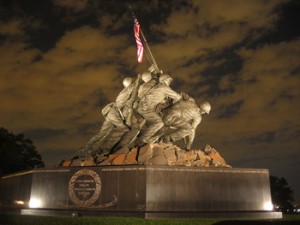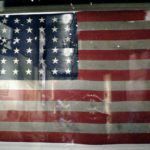The Iwo Jima Flag
Raising the Iwo Jima Flag was probably the most historic US flag photo ever. Joe Rosenthal took the most famous picture of the war photograph on February 23rd, 1945. It captured 5 US Marines and US Navy Corpsman raising a giant 48 star U.S. flag atop Mount Suribachi during the Battle of Iwo Jima, one of the decisive battles of World War II.

Joe Rosenthal was an Associated Press photographer. Thousands of publications carried the photograph. Later, it became the only photograph to win the Pulitzer Prize for Photography within the same year as its publication. It’s also regarded as the most important and recognizable US picture of the war and is probably the foremost reproduced photograph of all time.
The image served as a model for Marine Felix De Weldon to sculpt the 1954 United States Marines War Memorial. The memorial sits next to Arlington National Cemetery.

The famous photograph was actually the raising of the second Iwo Jima Flag. A smaller flag had earlier been raised and photographed by SSgt. Louis R. Lowery, a photographer with Leatherneck magazine. The first flag wasn’t easily visible, and Lowery sent for a replacement. The legend is that the Secretary of the Navy wanted the flag, but the local commander thought it should stay with the battalion. He sent his assistant operations officer to the shore for a replacement. As an afterthought, he shouted, “make it a bigger one.”
The bigger Iwo Jima Flag turned out to be 96-by-56 inches (that’s 8 feet long by 4 feet 8 inches high!) and took several soldiers to raise.
The Iwo Jima Flag was eventually damaged by the winds at the top of the mountain and replaced. Both the first and second Iwo Jima Flags are now on display at the National Museum of the Marine Corps near Quantico, Virginia.